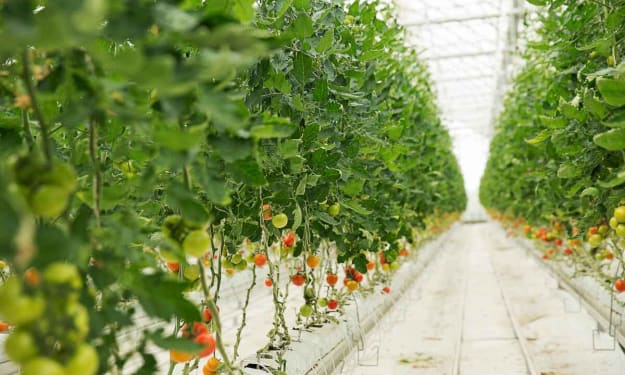
Plantae is a group of photosynthetic organisms that includes land plants, mosses, and liverworts. Plantae can be divided into two main groups based on their mode of locomotion: stationary and mobile Plantae. Stationary Plantae usually has a fixed position on the ground or other surface, while mobile Plantae moves around. Here is a breakdown of the differences between stationary and mobile Plantae:
Stationary Plantae:
-Are usually rooted in one place
-Have a permanent root system
-Receive their food from the soil
Mobile Plantae:
-Can move around freely
-Usually have a photosynthetic cell at the tip of their tentacles or leaves that extract light energy from the environment to produce organic matter
There is a lot of confusion about Plantae - what is the difference between stationary and mobile Plantae, and why does this matter? In this article, we'll break down the differences between stationary and mobile Plantae, explain why they matter, and give you a better understanding of how this relates to your everyday life.
What is a Plantae?
Plantae is a group of living organisms that includes both stationary and mobile plant species. Stationary plants are those that do not move around, while mobile plant species can be found moving about on their own, either through the wind or water. There are several key differences between stationary and mobile Plantae, including their life cycles, cell structure, and method of photosynthesis.
The Plantae kingdom is the largest and most diverse group of eukaryotic organisms, encompassing everything from single-celled bacteria to towering trees. There are two main types of Plantae: stationary and mobile. Stationary Plantae is those that live in one specific place, such as a tree or rock. Mobile plants, on the other hand, can move around.
Some common mobile plant species include fungi, which can disperse through the air or soil; and plants like mosses and ferns, which can creep along the ground or climb up trees. The key difference between stationary and mobile plantae is that mobile plants have cells that can move independently. This allows them to take advantage of new resources or environments, which is why some species can migrate hundreds of miles across continents.
Terminalia is a plant family that includes various types of woody shrubs and trees. These plants have a characteristic type of stem, which is not mobile. Instead, the stem grows from a rootstock. This makes Terminalia unique in the plant world, as stationary plants do not move around like other types of plants.
Another difference between Terminalia and other plants is that they lack leaves. Instead, they have modified stems called petioles that are used to absorb water and nutrients. The leaves that do exist on Terminalia typically have lobes or leaflets that are arranged in a specific pattern.
Types of Plantae
There are two main types of Plantae: stationary and mobile. Stationary Plantae is attached to the ground, while mobile plantae can move about. There are many other subtypes of Plantae, but these are the most common.
Stationary Plantae is attached to the ground, and typically have long roots that reach down into the soil. They don't move around very much, and typically only grow a few inches each year. Some examples of stationary plant species include mosses and ferns.
Mobile Plantae can move about, and usually, have shorter roots that spread out more than they extend downward. They grow more quickly than stationary plants, and can cover a lot of ground in a short amount of time. Some examples of mobile plant species include grasses and leaves.
There are also subtypes of mobile plant species based on how they move: wind-borne (such as blades of grass), water-borne (such as algae), or burrowing (such as earthworms).
There are two main types of Plantae: stationary and mobile. Stationary plants are those that do not move, while mobile plants can move around. Here is a quick overview of the differences between these two groups:
-Stationary plants: These plants don't move around but they do need water to survive. They have roots that reach down into the soil and take up water and nutrients from there.
-Mobile plants: These plants can move around and need to find new sources of food and water. They have stems that grow into leaves and flowers, and their roots are located at the base of these structures.
There are two main types of Plantae: stationary and mobile. Stationary plants are those that do not move around, while mobile plants can move around. There are many different types of stationary and mobile Plantae, and the main difference between them is how they use their energy to survive.
Stationary plants use photosynthesis to convert sunlight into energy. This energy is used to make food for the plant, and the plant stays in one place. Mobile plants use other methods of obtaining energy, such as moving their roots around or using wind or water to get energy. Some mobile plants can even swim or fly.
stationary vs mobile Plantae
Stationary Plantae, also called non-mobile plants, do not undergo any significant movement throughout their lives. They typically grow in one place and are unable to move from that location. Mobile plants, on the other hand, can move around and can even travel long distances. This is why mobile Plantae are often more common in nature.
There are many different types of mobile Plantae, but some of the most common include land plants and algae. Land plants can move around because they have roots that can spread out and explore new territories. Algae can also move around because they have cells that can secrete chemicals that help them move.
The difference between stationary and mobile plants can be broken down into a few key points:
Stationary plants are rooted in one spot, while mobile plants can move around.
Stationary plants typically have simpler and less intricate leaves, whereas mobile plants have more complex leaves that can photosynthesize more efficiently.
Stationary plants typically have shorter life spans than mobile plants.
What is the difference between stationary and mobile Plantae?
Stationary plants are those that do not move around. Mobile plants, on the other hand, are those that can move around. There are many different reasons why a plant might be mobile, but the most common reason is that a mobile plant can take advantage of new resources or environments that its stationary counterparts cannot.
While there are some important differences between stationary and mobile plants, they both have some important commonalities as well. For example, both types of plants need water to survive and grow, and both types of plants use photosynthesis to convert light into energy.
Differences between stationary and mobile Plantae
Plants that live on land typically have stationary roots and stems, while plants that grow in water or air typically have mobile roots and stems.
The main difference between stationary and mobile plantae is that stationary plants have fixed roots that stay rooted in one spot, while mobile plants have flexible Root systems that can move around. This mobility is important because it allows plants to access new areas for growth, avoid obstacles, and take in nutrients and water.
Another difference between stationary and mobile Plantae is the way they photosynthesize. Stationary plants use their root system to suck up sunlight from the surface, while mobile plants use leaves to capture light energy from the sun.
There are some major differences between stationary and mobile Plantae.
Stationary plants live in one specific place, while mobile plants can be found moving throughout the environment.
Another important difference is that stationary plants typically lack chloroplasts, while mobile plants do have them. Chloroplasts are organelles in cells that convert sunlight into energy for the plant.
The last major difference between stationary and mobile Plantae is their growth rate. Mobile plants typically grow more quickly than stationary plants.
Conclusion
In conclusion, it is clear that the difference between stationary and mobile Plantae involves their way of life. Stationary plants remain in one spot for most of their lives while mobile plants can move around in search of resources. Knowing the distinction between these two types of plant life is essential in order to properly classify them and understand how they interact with each other and the environment. Furthermore, understanding this difference helps us appreciate the incredible diversity of Plantae on our planet and keep its beauty alive.
About the Creator
Gurugets
Technology refers to the application of scientific knowledge for practical purposes, such as in the design, development, and use of machines, equipment, and systems.






Comments
There are no comments for this story
Be the first to respond and start the conversation.